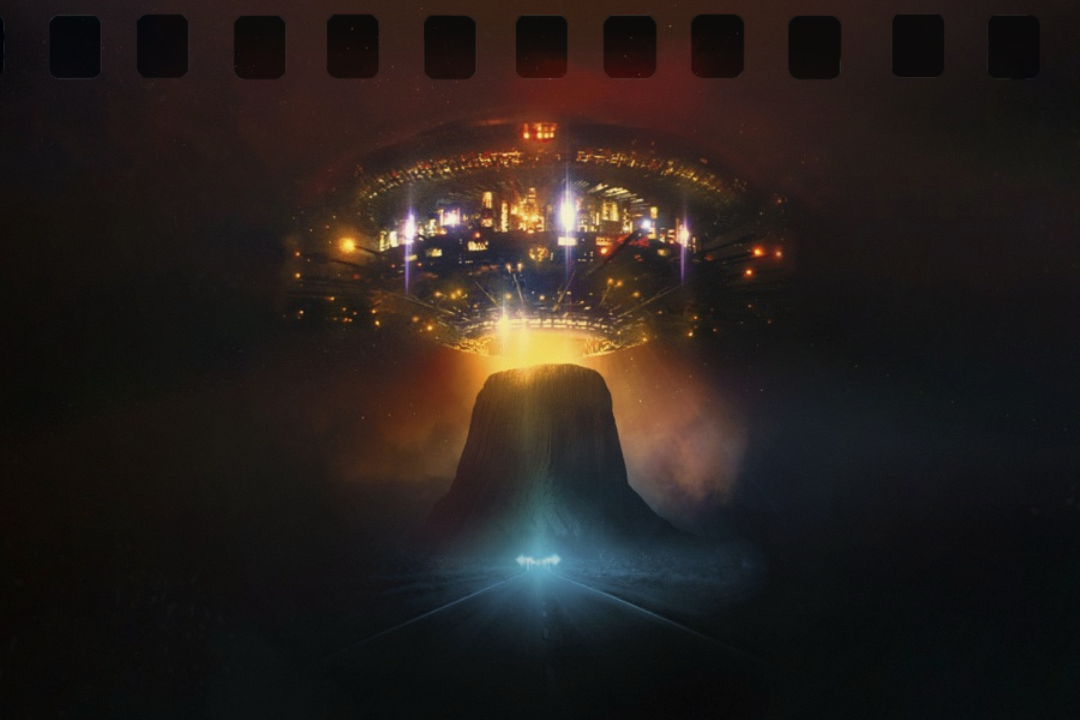‘Close Encounters of the Third Kind’ Is Why I Love (and Make) Movies
The Scoop features personal essays on movie-centric topics.
Everyone has that one movie from their childhood that first introduced them to the magic of cinema. For me, that was Steven Spielberg’s 1977 sci-fi classic Close Encounters of the Third Kind.
I vividly remember one of my earliest movie-watching experiences: I was just three or four years old, completely captivated by the climactic musical exchange between scientists and the alien mothership at the base of Devil’s Tower. My dad was watching from the couch while I sat on the floor just a couple feet from our oversized, wood-encased console TV, awed and overwhelmed by the sights and sounds on the screen. That moment left an indelible mark on me and ignited my love for movies. This is why I eventually got into filmmaking.
An Exploration for Something Greater
Close Encounters is one of the few films completely written by Spielberg himself, largely inspired by Firelight, a film he had created for $500 as a teenager. Close Encounters weaves together multiple character stories, beginning with scientist Claude Lacombe (played by legendary French filmmaker François Truffaut in one of his only acting roles), who is on a quest to uncover the mysteries linked to extraterrestrial visitors. We then meet Roy Neary (played by Richard Dreyfuss), an average working man from middle America who becomes obsessed after a close encounter with these alien beings. And finally, Jillian (played by Melinda Dillon), a single mother whose toddler Barry also experiences an encounter of his own.
All these narrative threads converge for a breathtaking face-to-face meeting with the alien visitors. However, beneath the surface, Close Encounters is an exploration of the human quest for something greater—searching for meaning and finding one’s place in an otherwise ordinary world, even if it means leaving that world.
Melinda Dillon and Richard Dreyfuss in Close Encounters of the Third Kind
As a child, I was too young to grasp the fractured family dynamics that unfold in the film. Roy’s growing obsession and the resulting chaos in his household is one of the earliest examples of Spielberg mirroring his own experiences growing up, a theme that would appear many times over in his subsequent work.
Sight and Sound
While I didn’t understand this aspect of the story back then, what stayed with me were the film’s iconic visuals. The iconography of Devil’s Tower, one of the most unique looking geological oddities Spielberg could’ve chosen, initially shows up in obsessive sketches by Jillian and in Roy’s mashed potato mountain, but then culminates in the shock and awe of seeing the actual mountain where the aforementioned climax would be destined to take place. And of course, the unforgettable scene where young Barry opens the front door to reveal a powerful, droning orange light before Jillian slams the door shut to keep out the horrifying alien power. That shot alone has inspired more than a few cinematic choices I’ve made as a cinematographer and director and I’m not ashamed to admit it.
But Close Encounters isn’t just a visual spectacle; its sound design is equally iconic. John Williams’ simple chord progression, used as a form of communication with the aliens, has become instantly recognizable in popular culture—from Morse code-like blips to Barry’s xylophone rendition to hundreds of people chanting towards the sky, a scene that still gives me chills. While the visuals alone are captivating, the sound design is integral to the film’s immersive experience.
The arrival of the alien mothership and the ensuing musical exchange is a poetic fusion of sight and sound. For a child new to the wonders of cinema, witnessing the giant, blinking light board exchanging notes and colored lights with the grand alien mothership was nothing short of mind-blowing. This seamless marriage of visual and auditory elements created an unforgettable cinematic experience that has profoundly influenced my own creative work. As I got into directing music videos early in my career in Nashville, I found myself connecting with that fusion to serve what I was working to bring to the screen.
The Legacy Lives On
Of course I wasn’t the only future filmmaker influenced by these images. The influence of Spielberg’s early sci-fi works can be seen in the works of Denis Villeneuve, J.J. Abrams, and the Duffer Brothers, to name a few. The legacy of this film continues to live on. I could’ve encountered any number of movies at the beginning of my life, but I will forever be grateful that Close Encounters of the Third Kind was my first encounter with the magic of cinema.


